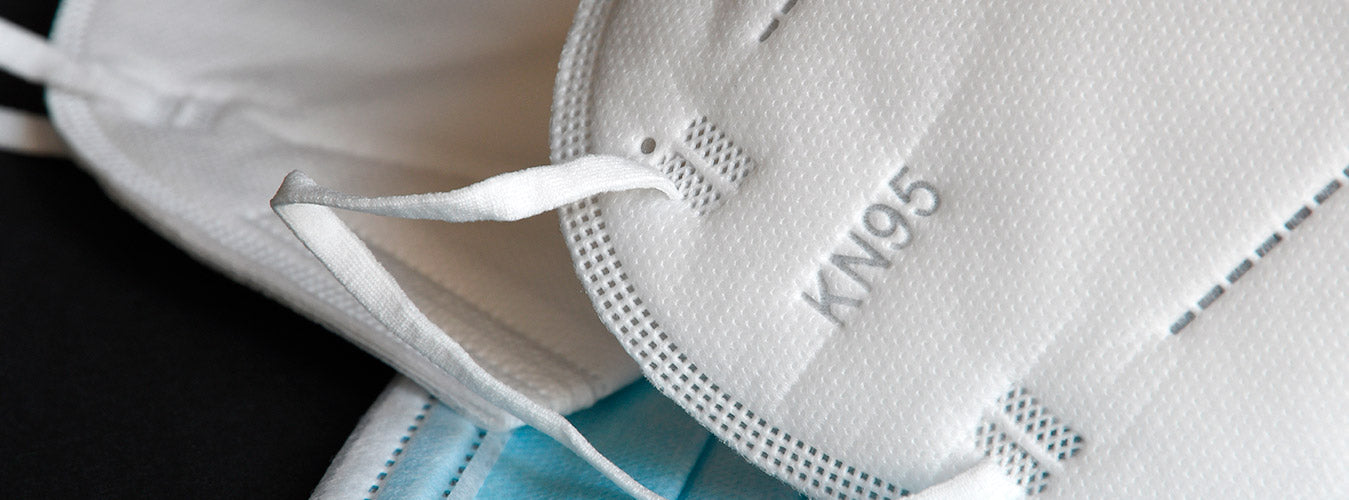
FAQ ON FACE COVERINGS
How do masks keep people safe?
COVID-19 spreads person-to-person primarily by respiratory droplets, becoming airborne when an individual sneezes, coughs, sings, or talks. By wearing a face mask, you keep your droplets to yourself. You might not have any outward symptoms of COVID, so it is essential to have your mask on.
A face covering, made with the suitable material and worn correctly, will protect the person wearing it and keep other people's droplets from entering the wearer's nose or mouth. When everyone wears a mask, that's what protects everyone. Keep a mask in your pocket whenever you go out.
Two things you can do to protect yourself and others when wearing a mask are:
- Pick a mask with multiple layers to keep your respiratory droplets in and others out.
- A mask made with layers will stop more respiratory droplets from infiltrating your mask or escaping from your mask if you are sick. It is necessary to ensure that your mask fits snugly against your face. Gaps can let air with respiratory droplets leak in and out around the edges of the mask. (1)
Why do mask regulations keep evolving?
In the beginning, researchers and scientists did not know how necessary mask-wearing would be among the public. Later, they learned that wearing masks was an effective way to help prevent the spread of this coronavirus. Also, masks were initially in short supply. At the time, it made sense to ensure that those who were at the highest risk of infection, such as medical caregivers and first responders, had an adequate supply of professional masks to protect them as they cared for patients. Experts are likely to revise mask guidelines as more people in the community are protected and/or as new variants arise. If another wave of infections comes, they'll recommend mask-wearing again.
When a completely new virus-like SARS-CoV-2 shows up in humans, recommendations frequently change as scientists learn more about how the virus behaves. (2)

HOW TO PROPERLY WEAR A MASK
1) Avoid face coverings where your nose and mouth are not adequately covered. For example, masks with exhalation valves, drinking straw ports, bandanas, gaiters, or clear shield face covers alone do not provide adequate protection.
2) A properly fitting mask should cover your mouth, nose, and chin. You should be able to breathe and speak comfortably through the mask.
- Check for any air gaps around the edges of the mask, such as the sides and the top or bottom.
- A proper fit will allow the mask to move in and out with each breath.
- Consider wearing a mask fitter or mask brace, especially if you have facial hair.
- Wash or sanitize your hands after putting on a mask.
3) Avoid these common mask-wearing mistakes:
- Don't wear the mask too low so only your nose is exposed.
- Don't wear the mask too high so that only your nose is covered.
- Don't wear the mask under your chin, exposing your nose and mouth.
- Don't wear the mask around your neck or dangling from one ear.
- Don't wear two disposable masks at once, even if they are different types (e.g. KN95 and a surgical mask.)
- Don't remove your mask in public enclosed spaces, whether others are present or not, unless dining or in appropriate social distancing areas.
- Don't place a mask on children under two years of age.
4) While wearing a mask, do not touch your face. This includes not touching the faces of children. (You may have children in your care who are wearing a mask.)
5) Don't share your mask with someone else, even if it is freshly laundered.
6) Dispose of used, disposable masks properly, treat them as biohazardous waste and wash your hands after removal.
